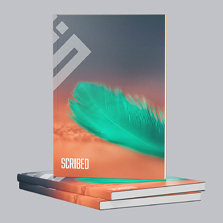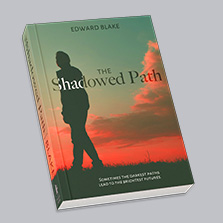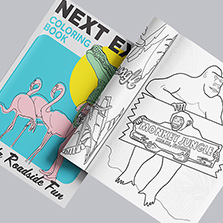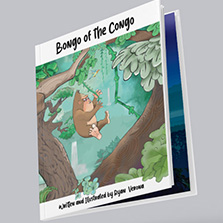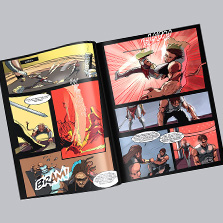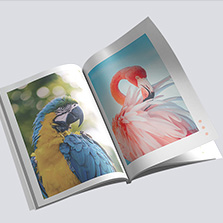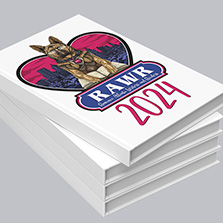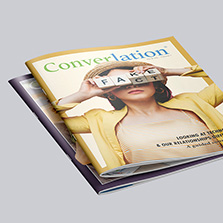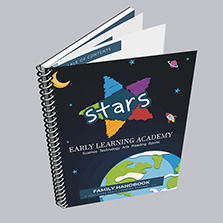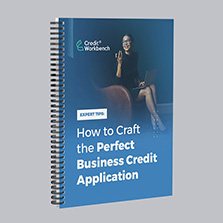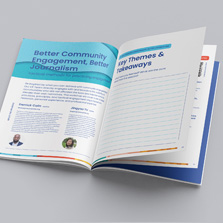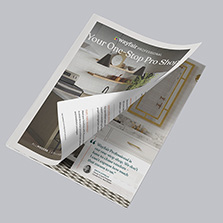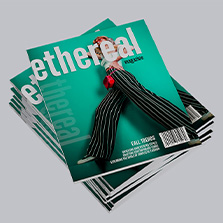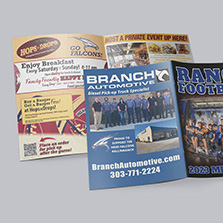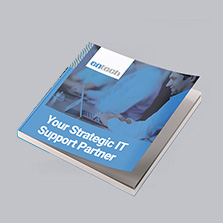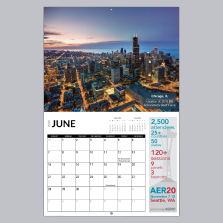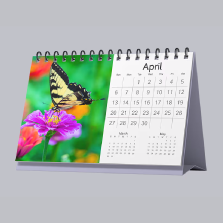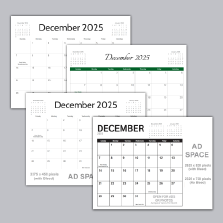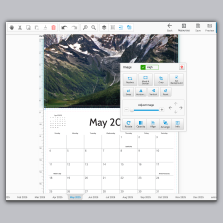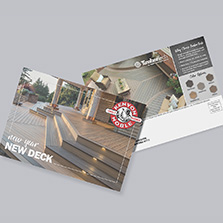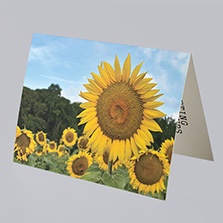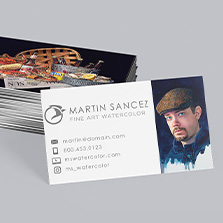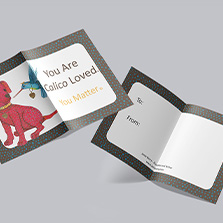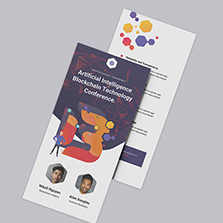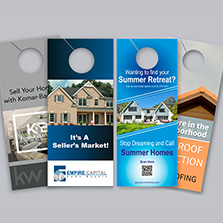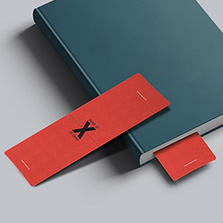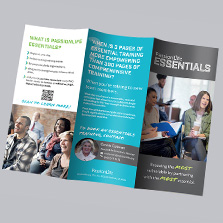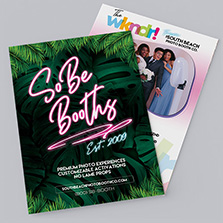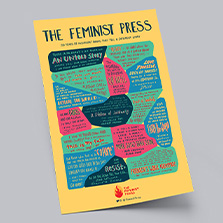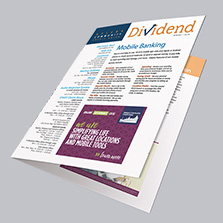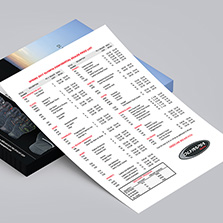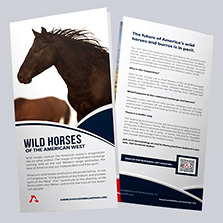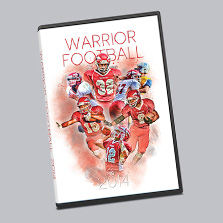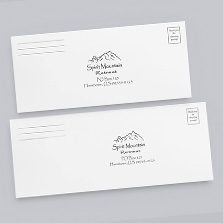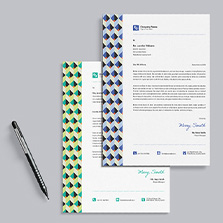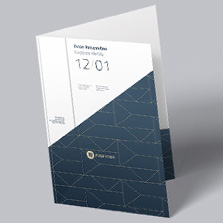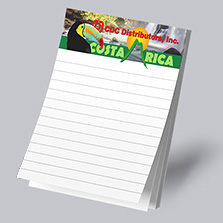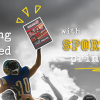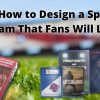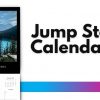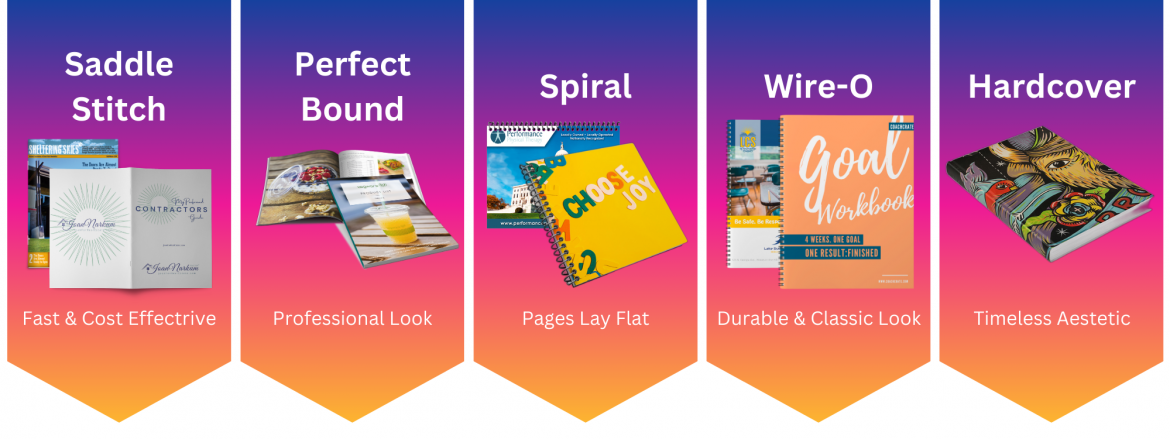
Bookbinding -The Ultimate Guide
If you’re thinking about self-publishing books or have a large order of books or booklets coming up the pipeline, you’re probably wondering about bookbinding. Before even designing your next project, you definitely want to consider all of the binding choices. Some factors to consider are page count and the purpose of your book. Does it have a lot of pages? Do you need your book to last a long time? Are you ordering in bulk? Who is your audience?
When considering which bookbinding option is right for you, you also need to consider your budget and design style. If you’re struggling with any of these questions or still aren’t sure the differences between our popular bookbinding types (hardcover, perfect, saddle-stitch, wire-o, or spiral), then you’ve come to the right place! Let’s dive into our ultimate bookbinding guide so you can print your next order or books or booklets with confidence.
Your Ultimate Book Binding Guide
Book Binding is defined as the process of taking printed inside pages and assembling and securing them within a cover. We offer several types of bound book options: hardcover, saddle stitch, perfect bound, spiral, wire-o, and hardcover book printing and binding. We will also explain the terms: How to bind a book, how are books made, softcover, self-cover, hardcover, and page count. Our bookbinding company is fast, easy, and affordable
A SOFTCOVER BOOK printing is like a paperback novel, catalog, or magazine. The pages are bound within a pliable cardstock cover. Whereas a hardcover book has a cover made from thick, rigid paperboard (like an elementary school textbook).
SOFTCOVER BOOKS are printed on a more durable heavier-weight cardstock paper to give your book a little more thickness and heft. We recommend 80# or 100# gloss or matte cardstock for the cover and 80# or 100# gloss or matte text for the inside pages. 70# gloss text is available when weight becomes an issue, for example, mailing.
We offer 4 types of softcover binding: Perfect bound, saddle-stitched are our most popular binding types. We also offer spiral bound and wire-o binding.
- Softcover books offer the BEST VALUE.
- They are more popular, affordable, and offer a quicker turnaround time than hardcover books.
- The cover can be UV Coated with a luxurious high gloss finish.
Self-cover Books have the same paperweight for the front and back cover and the inside pages. We only offer self-cover for Saddle Stitched Books. Our best value suggestion when producing a self-cover booklet is to use 100# Text (Gloss or Matte) for both the inside and cover papers. Your final product will look and feel professional.
- Easier to fold into a self-mailer or put into an envelope
- Does not require the durability and longevity of a heavier cover
- More easily damaged when mailed.
- 80# or 70# gloss text are also available when weight becomes an issue, for example, mailing.
We Offer 5 Types of Softcover Book Binding Types:
Browse each of the binding styles and keep in mind which stands out to you most and which would align with your business, brand, or idea. At PrintingCenterUSA we offer Saddle Stich, Hardcover, Perfect Bound, wire-O and Spiral bound books. From sizes, finishes, and paper types we have many options to explore and experiment with. Order one of our free sample packs to feel each and every sample we have to offer.
Saddle Stitch Booklets
Saddle stitch printing is the most popular form of binding, inexpensive, simple to make, and offers the fastest turn-around time yet very professional looking. We offer saddle stitch self-cover and softcover booklets and calendars with smaller page counts between 8 and 92 pages.
How To Saddle Stitch A Book
Saddle stitching is basically single sheets of paper, printed on both sides, collated in page number order, folded in half, then stapled through the fold along the left edge or top edge, securing the sheets together and then trimming the 3 sides to the desired, finished size. They can lay flat and stay open when you are flipping through the pages, which makes them easier to read. Commonly used for booklets, magazines, comic books, and coloring books.
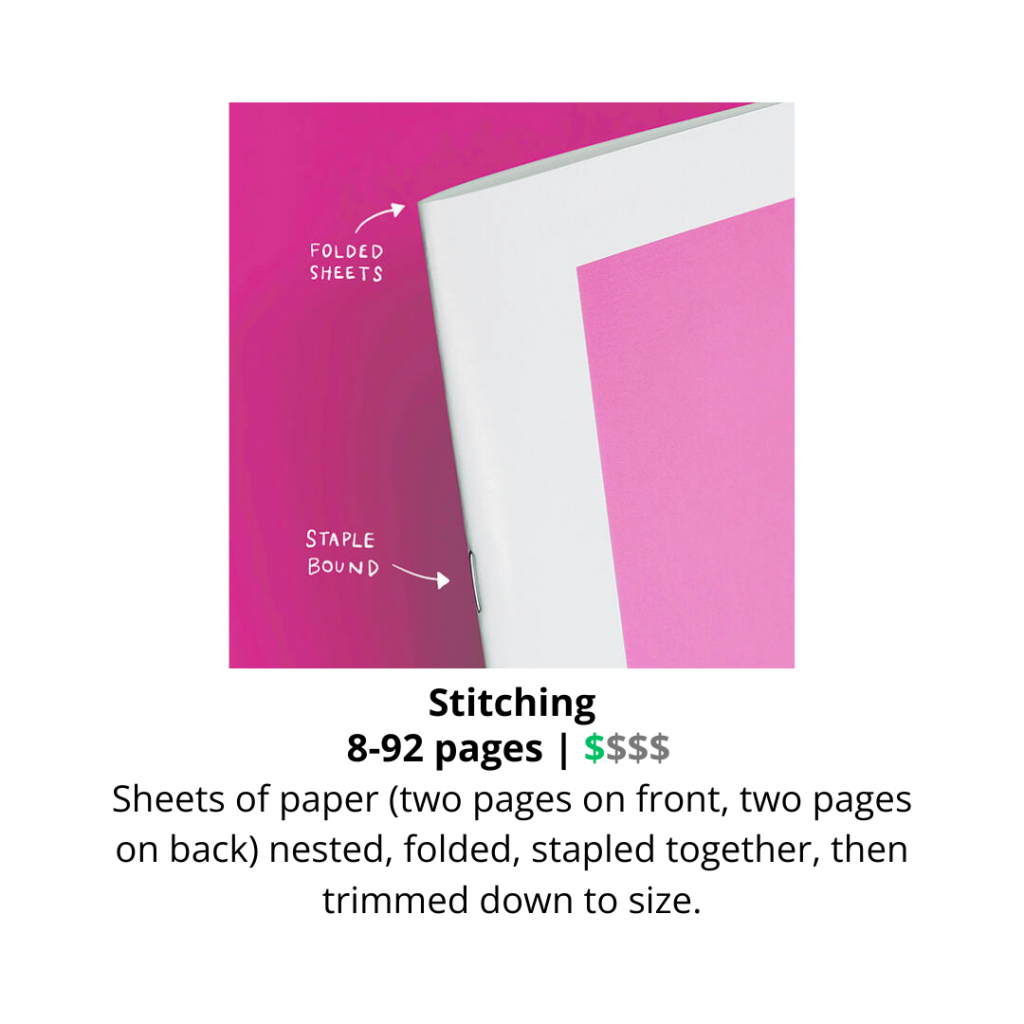
Page Count for Saddle Stitch Binding
You must have a page count that is evenly divisible by 4. Each sheet of paper will contain 4 of the booklet’s numbered pages. For example, if you are printing an 8.5” x 11” saddle stitch book, its pages and cover would be made from 11” x 17” sheets that are folded in half to the size of 8.5” x 11.” The cover page counts as page 1.
We can print saddle stitch orders that are 8 – 92 pages. In other words, your document (counting the front and back cover) should be one of the following page counts:8 | 12 | 16 | 20 | 24 | 28 | 32 | 36 40 | 44 | 48 | 52 | 56 | 60 | 64 | 68 | 72 | 76 | 80 | 84 | 88 | 92
For books over 92 pages, perfect binding, spiral binding, and wire-o binding are recommended.
Hardcover Book
A hardcover book, also known as hardbound, casebound, or hardback, is a book that is bound with a rigid paper board for a more protective cover. It usually has a flexible hinge near the spine which allows the book to lie flat on a surface when it’s opened. Hardcover books are available in a variety of cover options including, but not limited to paper stock, leather, cloth, or leatherette.
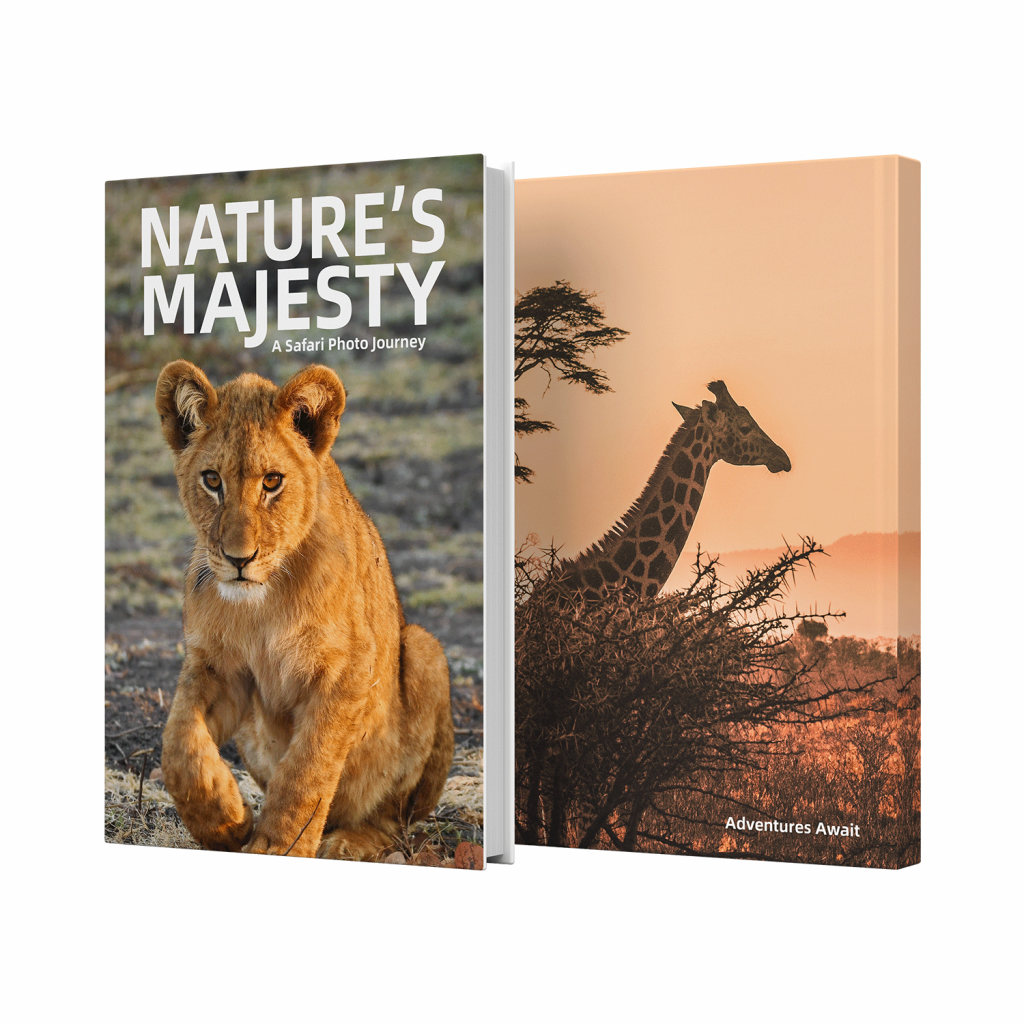
Hardcover books are often the number one choice for when people are making coffee table books, art books, yearbooks, textbooks, bibles, and cookbooks. Not only because they are seen as more expensive, but they look nicer and more professional because hardcovers are a lot more durable than paperback books. Collector items, gifts, keepsakes, are prioritized as high-value items for hardcovers to convey this value and longevity.
How are Hardcover Bound Books Made?
The hardcover book is meticulously crafted, comprising two main parts: the outer cover and the book block or interior pages. The covers are printed on thin sheets, laminated, and then carefully cut, glued, and folded onto a dense, thick board, resulting in a high-quality, long-lasting book. The book blocks are bound with glue to provide a reliable and durable binding. Once the covers and book blocks are created, they are combined to produce your final printed book, ensuring a product of exceptional quality.
Page Count for a Hardcover Book
For hardcover books we can print them with 30-400 inside pages that will be counted the same as saddle stitch for the inside pages only. For the cover you will upload it as two cover pages and a spine or as one big spread. You will not have to submit an additional inside cover page because it will be covered with a white paper that helps bind your book together.
Perfect Bound Booklets
Perfect bound is the most popular type of softcover binding. Perfect bound books are inexpensive to make and provide a durable, high-quality attractive square spine look that can’t be matched. A paperback book, catalog, or magazine is a familiar example.
What is Perfect Binding
Perfect binding book printing is single sheets (text weight) paper printed on both sides and collated in page number order, one on top of the other, and gathered into a book block. The spine edge is ground off. The softcover (a thicker cardstock) is placed over and around the book block (interior pages) and attached by the application of a strong yet flexible PUR glue along the binding edge, creating a professional-looking square spine that can be printed on. The other three sides of the booklet are then trimmed to the desired finished size to give them that clean “perfect” edge, thus the name “perfect” bound. An open perfect bound book does not lay flat like a saddle stitch, wire-o, or spiral-bound book.
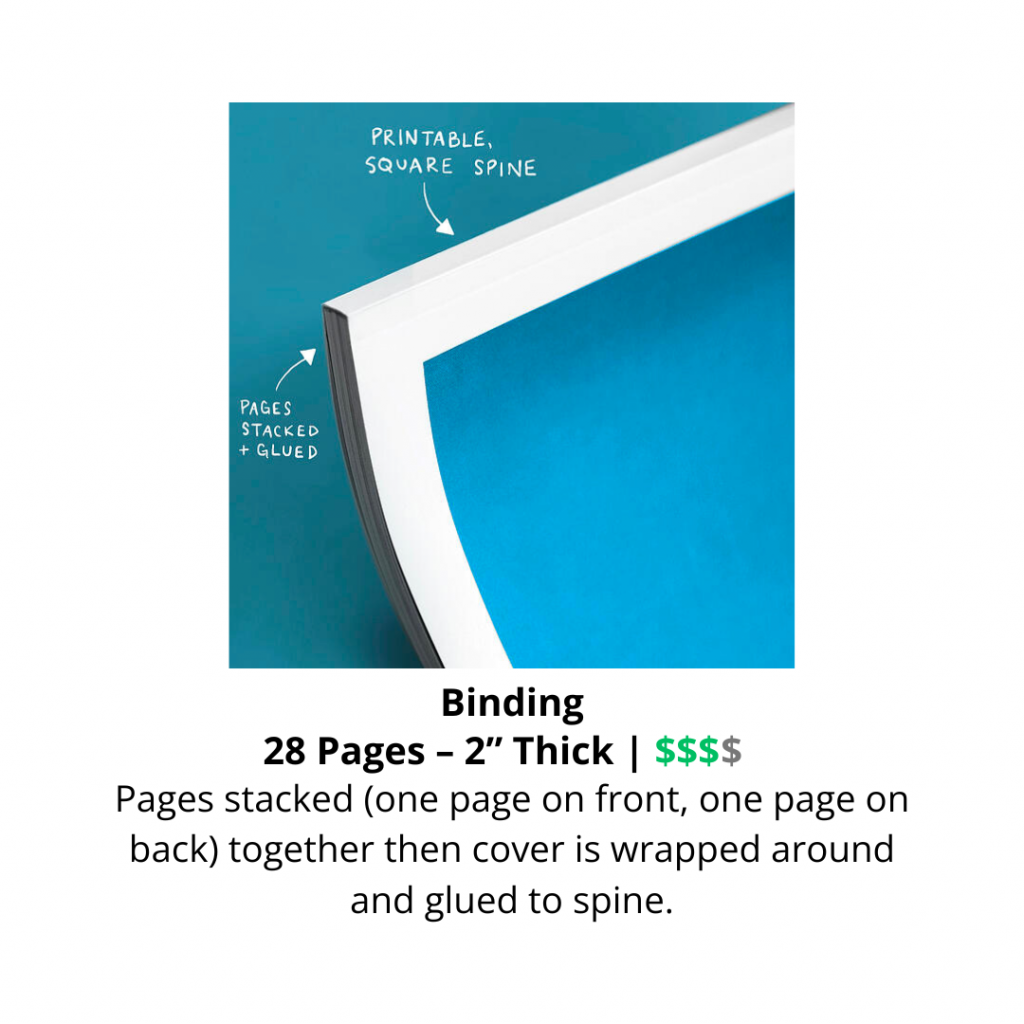
Perfect Bound Design Tips
Gutters: because perfect bound books cannot lay completely flat without breaking, there is a portion of each inside page that will lose visibility into the spine. This inside gutter can take up between ¼” and 3/8” of each page. Be mindful of this while designing and add an extra ½” cushion to the binding-side margins of each page of your perfect bound book.
Crossovers or images that span two adjacent pages, inside of perfect bound books are not recommended.
Spine Width: A unique feature of perfect bound books is the ability to design the spine if it is larger than 1/8th inch (2″ thick maximum). You can keep it a solid color, add text or have one continuous image covering the front cover across to the back cover. Determining your spine width depends on the number of pages and the paper stock you have selected.
Click Here to Download our Spine Calculator
Number of Pages Accepted
Perfect bound book printing is the ideal choice for publications with higher page counts. The minimum number of pages is 28 pages to 2” thick maximum. 2-page increments are required when ordering.

We can print spiral and wire-o orders that have 8 pages – 800 pages (or up to 1 ¼ inch thick) and we require them to be in 2-page increments.
Spiral Bound Books
Spiral bookbinding is more durable than wire-o binding but does not have the professional look of a wire-o bound book. A spiral bound book uses a durable plastic coil which makes it an ideal option for everyday use as reference material. The plastic coil allows for frequent use that will not damage the bookbinding coil. The spiral-bound printing allows books to lie flat and fold or wrap back around themselves (360 degrees).
Spiral Bound Book Printing
Coil-bound books are great for instruction and repair manuals, cookbooks, directories, workbooks, handbooks, guides, annual reports, and other reference materials. Plastic spiral binding is also excellent for wall calendars and planners that hang flat against the wall.
Spiral-bound booklet printing offers different coil colors, sizes, and diameters to accommodate a higher page count (8 pages – 800 pages) up to 2 3/4” thick. You cannot print on the spine or add or remove pages. Crossovers or images that span two adjacent pages, inside of perfect bound books are not recommended. Available only in the black coil.
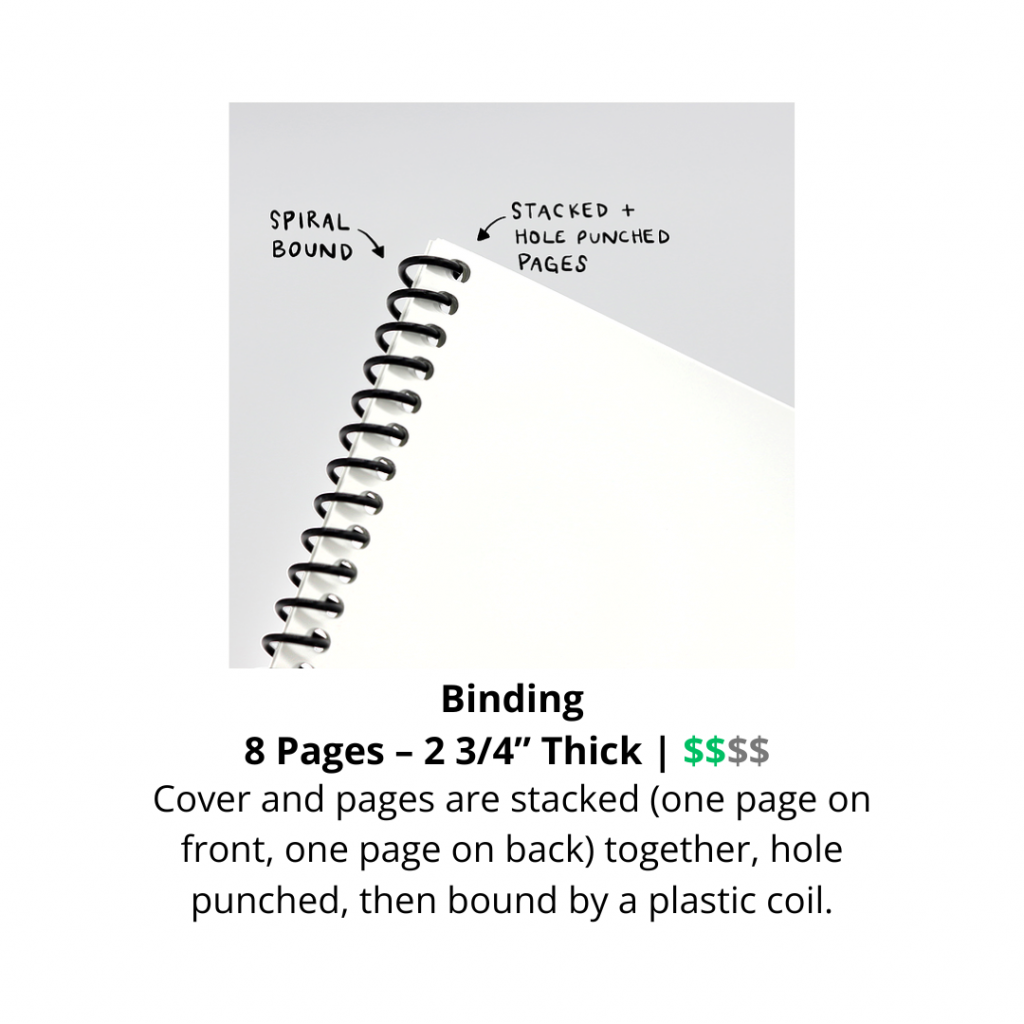
How To Spiral Bind a Book
Spiral-bound printing is single sheets of paper printed on both sides, cut down to trim size, and collated in page number order. Then a continuous plastic coil loop shaped like a long spring pass through a row of punched holes at the edge of the printed piece the binding can be on the left or top of the project depending on how the project is designed
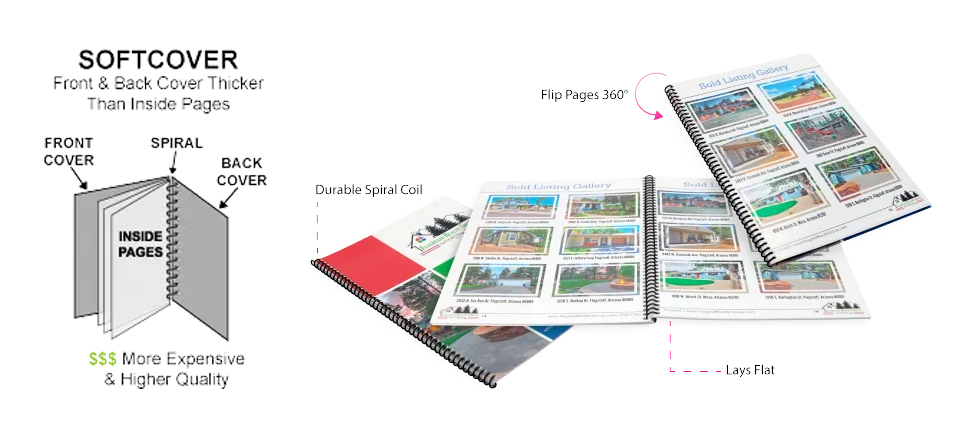
Wire-O Books
Wire o binding is similar to the spiral binding. Wire-o binding uses a looped metal wire which makes it an ideal option when the product is for a more formal use with an organized and professional look such as a presentation. It uses a black metal wire and offers a lower page count than spiral binding. Great for workbooks, annual reports, instructional books, manuals, calendars, reports, presentation booklets, and more!
What is Wire-O Binding?
Wire o binding is single sheets of paper printed on both sides, cut down to trim size, and collated in page number order. The wire often referred to as a wire comb or twin-loop / double-loop binding, has pre-formed pairs of two small loops of wire that run along a C-shaped spine that looks like a comb. These wire loops are inserted through each of the square holes that have been punched through the edge of the printed book’s cover and pages which allow the pages of your book to line up precisely. A wire closer squeezes the spine until it is round securing the cover and pages. the binding can be on the left or top of the project depending on how the project is designed.
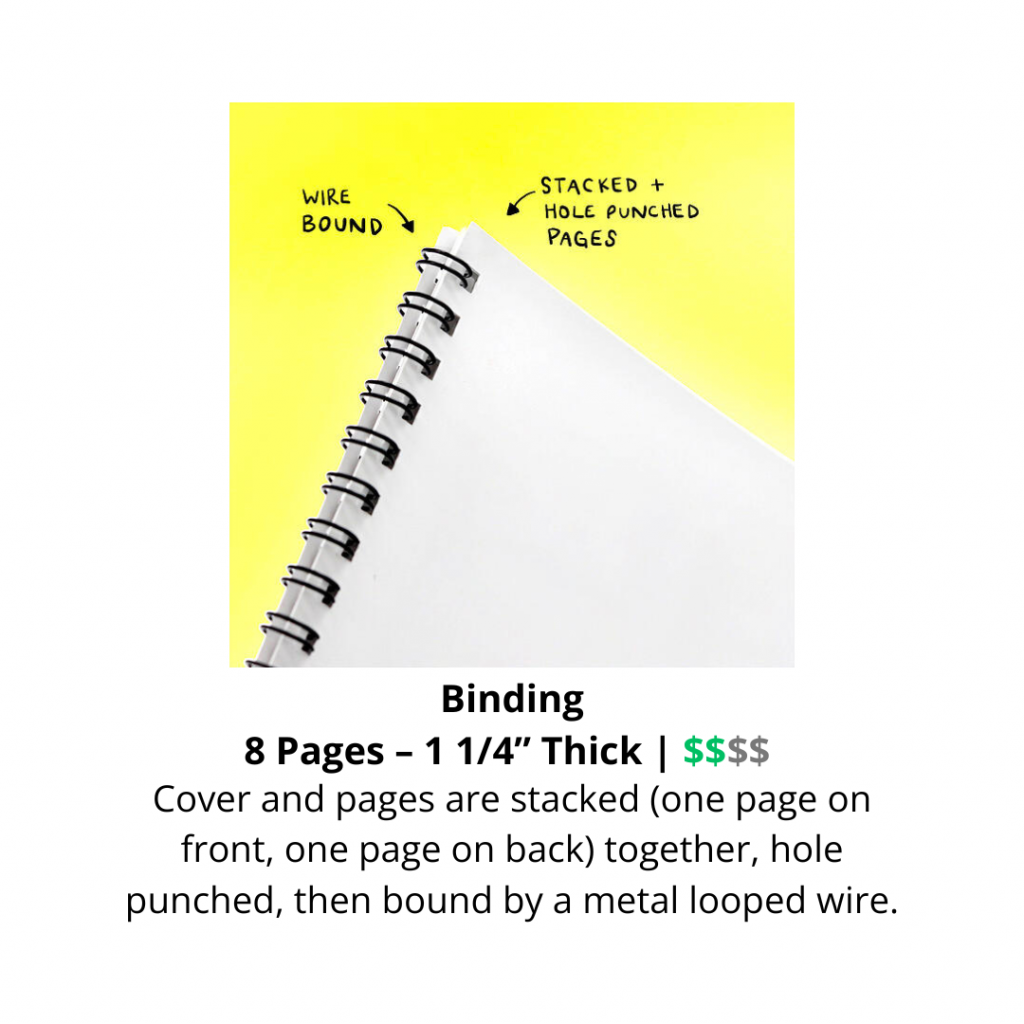
Wire-o binding will generally have a lower page count than spiral up to 1¼ “thick. The wire is available in different lengths for your bound books and calendars. The color of the standard wire we offer is black. You cannot print on the spine, add or remove pages. Crossovers or images that span two adjacent pages are not recommended.
We can print spiral and wire-o orders that have 8 pages – 800 pages (or up to 1 ¼ inch thick) and we require them to be in 2-page increments. They may cost a little more.
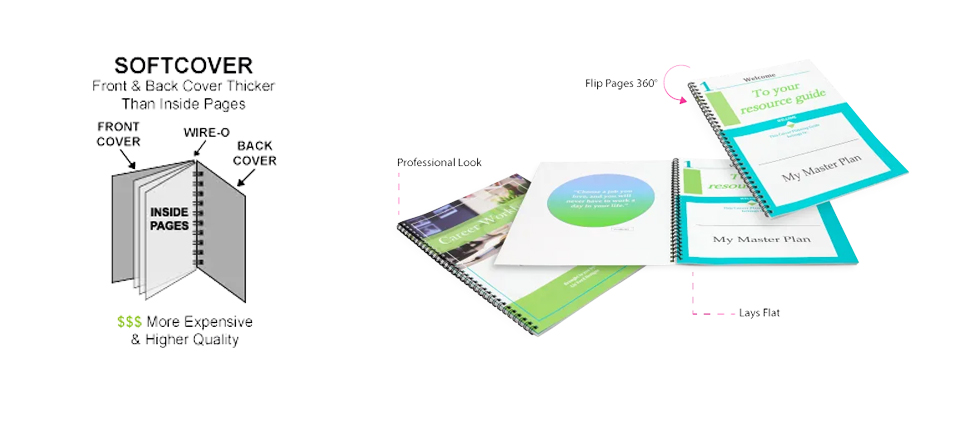
Create A Lookbook or Portfolio to Showcase Your Work
Lookbooks and portfolios are a great way to showcase your work and professionally display your photos or products. Different types of books work better with other bindings. Here are a few popular book styles that coincide with our available binding:
- Programs
- Marketing Booklets
- Portfolio Books
- Coloring Books
- Magazines
- Photo Books
- Look Books
- Yearbooks
- Product Catalogs
- Memory Books
- Art Books
- Handbooks
- Manuals
- Cookbooks
- Guide Books
- Directories
- Workbooks
- Handbook
- Notebooks
- Journals
- Manuals
- Annual Reports
- Presentation Books
- Directories
- Report Book
- Guide Books
- Business Books
- Calendars
Regardless of the style of look book or portfolio booklet you want to create, we have the tools you need and the binding options to make your project look amazing.
How to Choose What Size Book to Print
Most online printing centers offer a variety of printing sizing for various projects. Here we go over some of the standard sizes so you can choose the most cost-effective option for your next book. When you order online with PCUSA, we automatically fill in our pricing calculator with the most popular and inexpensive options for books and booklets.
Portrait Sizes
- 25 x 11
- 5 x 8.5
- 6 x 9
- 5 x 11
- A4 (8.27 x 11.69)
- A5 (5.83 x 8.27)
- A6 (4.13 x 5.83)
Landscape Sizes
- 5 x 5.5
- 9 x 6
- 11 x 8.5
Square Sizes
- 6 x 6
- 8 x 8
Though these are just the most commonly ordered and the easiest for our machines to print, we also offer the option to order custom-sized books. All we ask is that the height of your custom size book is between 4” and 9” and the width should be between 5” and 12.”
The number of pages your booklet project can have will depend on which binding type you choose. Here’s what you need to know:
Saddle Stitch: You can have a page quantity anywhere between 8-92 for Saddle Stitch Binding.
Perfect Bound: You must have a minimum of 28 pages to print a perfect-bound book. Page counts can go up to 2 inches thick, depending on the thickness of the inside pages.
Spiral: 2 inches is the max with this form of binding.
Wire-O: 1.25 inches thick is the max.
What’s The Difference Between Soft & Hard Bound Books?
A softbound book, also known as a paperback, softback, or softcover, is characterized by the paper cover, often held together with glue rather than stitches or staples. In contrast, hardbound or hardback books are bound with cardboard covered with cloth, plastic, or leather. The pages on the inside of a paperback are made of paper different from the material on the cover.
Softbound books are usually much less expensive, as they are easier to make and more flexible than hardbound books. However, though hard-bound books are more expensive, they are more durable, last longer, and are much more equipped to protect the paper content.
Choosing the correct binding for what you want your book to be will help you set a budget and decide the other details for your book printing.
Printing In Black and White Vs. Full Color
At PrintingCenterUSA, we have two types of printing; full-color CMYK (also known as 4-color process or 4/4) and black and white printing (black only, 1-color process, or 1/1).
For full-color CMYK printing, we use four colors of ink: Cyan, Magenta, Yellow, and blacK to create millions of colors. Of course, we also have digital RGB printing, but CMYK printing creates a quality finish that stands out from digital printing.
Black and white or black-only printing only uses one color of ink, black or K. Black and white printing is more cost-effective since it requires less setup and materials. However, it’s important to note that the black produced using only K is not as deep as the color Rich Black, which is made using all four colors of CMYK.
Do You Need a Custom Cover for Your Book?
When you’re self-publishing a book or looking for help with your next printing project, there are lots of exciting design choices to make. From the type of book, format, size, paper choices, binding options, and more, all of these play a big part in your publication’s overall look and feel. Take a look at some of your favorite books and booklets and consider how all of these decisions contribute to the book and why you love it.
The cover of the book might be the most important part of the process, so consider the binding that will work best for the purpose of your project. The choice of book cover comes down to your personal style and aesthetic preferences and the reading experience you hope to create.
Though soft covers or paper covers are more affordable, they don’t last as long. Hardcovers are more expensive, but they last longer and often look more professional than self-covers.
Comparing Softcover vs. Self-Cover Book Binding Types
While describing the book binding options above, we mentioned softcover and self-cover. Here is a brief look at soft cover and self-cover to give you a better grasp.
A SOFTCOVER BOOK is like a paperback novel, catalog or magazine. The soft covers are printed on a more durable heavier weight cover cardstock paper to give your book a little more thickness and heft. We recommend 80# or 100# gloss or matte cover cardstock for the cover and 80# or 100# gloss or matte text for the inside pages. 70# gloss text is available when weight becomes an issue, for example, mailing. Below is a saddle stitch example of softcover (the darker colored cover in the example is a heavier weight than the inside pages).

- We offer 4 types of softcover binding: Perfect bound & Saddle-stitched are our most popular.
- We also offer softcover Spiral bound and Wire-o binding.
- Softcover books offer the BEST VALUE.
- The cover can be UV Coated with a luxurious high gloss finish.
- They are more popular, affordable and offer a quicker turnaround time than hardcover books.
- A hardcover book has a cover made from thick, rigid paperboard (like an elementary school textbook).
- At this time, we do not offer hardcover books.
SELF-COVER BOOKS have the same paper weight for the front and back cover and the inside pages. 100# Text (Gloss or Matte) is recommended. We only offer self-cover for Saddle Stitched Books. Below is a saddle stitch example of self-cover (the cover and inside pages are the same paper weight).

- Easier to fold into a self-mailer or put into an envelope
- Does not require the durability and longevity of a heavier cover
- More easily damaged when mailed.
- 80# or 70# gloss text are also available when weight becomes an issue, for example, mailing.
Common Book Sizes
Some of the most common book sizes are as follows:
- Magazine/Catalog: 8.5″ x 11″
- Children’s Book: 8.5″ x 11″ or 11″ x 8.5″
- Paperback Novel: 5.5″ x 8.5″ or 6″ x 9″
- Comic Book: 6.625″ x 10.25″
- Booklets: 8.5″ x 11″
- Art Book: 8.5″ x 11″ or 9” x 12”
- Photo Book: 8.5″ x 11″ or 9” x 12”
What Is a Bound Book?
A bound book is a collection of printed pages that have been assembled within a cover. In many cases, the cover is either thicker than the interior pages or made of a different material to provide durability to the finished book.
Like we mentioned earlier, there are different types of binding, the most popular being perfect binding, saddle-stitched, wire-o, and spiral bound.
When most people think of a “bound book,” they think of perfect binding. Read on as we describe the process of printing a perfect-bound book.
The Process of Printing a Bound Book
Our customers love perfect bound books because they are pretty inexpensive and provide a durable and professional book that looks high quality. Perfect bound is the ideal choice for books and paper collections that have a higher page count. The minimum page count is 28 pages, and your book can be up to 2 inches thick! With perfect binding, you get a softcover bound to the individual inside pages using flexible glue, which gives you a printable square spine that looks clean and sophisticated.
During the binding process, your printed sheets are gathered into a book, one right on top of the other, and the edges are trimmed to perfection. Then your book is glued into a wraparound cover and then cut again for size. This gluing process creates a beautiful square spine, but because of this, the pages will not lay flat while you are flipping through them.
Perfect bound book printing is ideal for novels, directories, magazines, manuals, yearbooks, catalogs, and really any book that has a lot of pages. If you want your book to feel professional, you want to choose a bound book printer like PrintingCenterUSA for the best possible quality.
Types of Books
There are so many possibilities when it comes to ordering custom books or booklets. Here are some of the most popular book types we see come through every day at PrintingCenterUSA:
- Directories
- Cook Books
- Picture Books
- Coffee Table Books
- Art Books
- Coloring Books
- Children’s Book
- Photography Display Book
- Portfolio Books
- Student Handbooks
- Biography Books
- Baby Books
- Memory Books
- Recipe Books
- Cartoon Books
- Wedding Books
- Research Books
- History Books
- Safety Books
- Prayer Books
- Training Books
- Manuals
- Portfolio Magazine Style Book
- And more!
Ready To Order? Choose PrintingCenterUSA for All Your Book Binding Needs
Now that you’ve read our ultimate bookbinding guide, you’re ready to order your amazing books. Choose your size, style, size, and binding options, and place your order online today. Still, have questions? Get in touch with one of our expert customer service representatives who can answer your questions, help you figure out all the details, and walk you through the process.
What are you waiting for? Order your book or get a free quote today!

